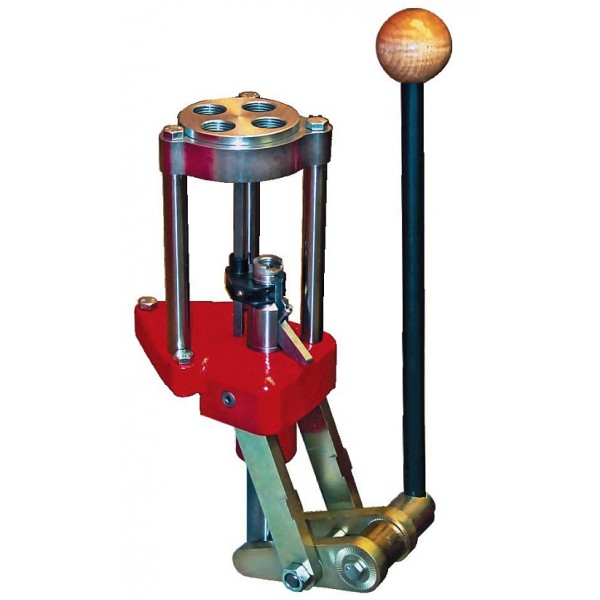I am new to the game also and this trimming business has me all flustered to no end.
ditch the Manual trimmer. Get something powered. Life is too short for manual trimmers.
Follow along with the video below to see how to install our site as a web app on your home screen.
Note: This feature may not be available in some browsers.
I am new to the game also and this trimming business has me all flustered to no end.
View attachment 2558380
ditch the Manual trimmer. Get something powered. Life is too short for manual trimmers.
That's my first press I bought a couple weeks ago, so far I really enjoy itAnd I'm gonna have to disagree with you.
OP listed a bunch of calibers, including a mix of both primer sizes, straight wall pistol, small bottleneck rifle, larger bottleneck rifle, and shotgun. If he starts with something like a Square Deal, he's only going to be able to handle one of those straight wall calibers for a starting cost of about $500 - $600, he'll have to pay a bunch of money for other pistol caliber conversions, and he won't be able to do rifle (or shotgun). And some turret presses have auto advance mechanisms...no manual turning.
OP, here's an inexpensive way to start, that will handle every caliber you listed except 12ga:
Lee Classic Cast Turret Press ... some of Lee's products are "fiddly." This isn't one of those. Solid as they come, cast iron and steel, probably the best turret press design ever, quality made in the USA. Can do pistol rounds at 150 to 200 rounds/hour and load rifle as a single stage press. And it's a very easy press to learn on. Let's you learn both single stage and "semi progressive" loading concepts.
Get an extra turret for each caliber. About $12 each. Let's you set your dies once and never have to adjust them again. Get Lee deluxe four die pistol sets. Get Lee deluxe three die rifle sets (or other brands...any 7/8" dies work with this setup).
You'll spend $125 or so on the press, and about $50 per caliber (turret and dies). You'll spend another $100 to $200 on accessories (scale, tumbler, powder measure, caliper, various small tools).
Recommend you start with your favorite pistol caliber, and the rifle caliber you shoot most of. Pistol and rifle are different processes. Learn them on this setup. It may be all you ever need. If you turn into a reloading junky, you might upgrade to (or add) a fully progressive press later on. Or you might add a traditional single stage. Each of us does this a bit differently.
Regarding reloading 12ga: Not worth it, except for exotic loads (steel shot), and maybe self-defense rounds. Birdshot? Forget it. Unless you are competition shooter wanting to customize your loads, it costs more per round to load than what you can buy at the store.

I use the RCBS swager die as well. I feel it is more consistent than reaming. I use a WFT2 from little crow gun works to trim. they have inserts for about any sammi spec rifle case and a lot of wildcats. I just chuck it up in my drill press and trim brass like I am sharpening pencils.
I think the most important thing for a new reloader to consider is personality.....
Be real honest with yourself:
-Are you a careful person?
-Do you follow instructions well-color inside the lines?
-Are you detail oriented?
-Do you take pride in doing things better than others?
*Reloading data is not a "close-enough" thing. They create max and min loads for a reason-and there are not buffers.*
I am thinking of a couple of friends who have been curious about reloading. One in particular is someone who I think would get into trouble. He is always in a rush. Always jumping to conclusions (tries to finish sentences for others.) He is easily frustrated, and did I mention-impatient? (Honestly, I think he has some kind of ADHD.)
Someone like that really should avoid the hobby. He's a wonderful person-one of my very favorite people on Earth.... BUT he would be a horrible reloader.
He also likes to drink. Like all day when he's off.
Drinking and reloading is a horrible idea. I never, ever touch a drop when I am near my equipment.
All that being said.... If you have the right kind of personality, reloading is a great way to learn way more than you thought you could about how guns work, and how to make much better ammo than a factory can. It's also a fabulous way to produce ammo that a particular gun loves. Once you find the right load for a high powered rifle, you will see accuracy really improve remarkably.
Reloading is a great way to clear your mind as well. I think that's my favorite thing about it. You tend to forget all your concerns and worries when you are focused on just one thing at a time-and doing it right.
It's also cool to be able to churn out unobtainable ammo during a crisis. Like now.
But be brutally honest.... Are you the right kind of person? Will you thoroughly read and truly understand two or three complete reloading manuals first? If so, welcome to the hobby!